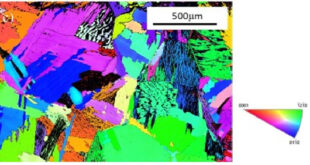Journal of Non-Newtonian Fluid Mechanics, 7 February 2015.
Pérez-Camacho1, J.E. López-Aguilar1,2, F. Calderas1, O. Manero1, M.F. Webster2
- Instituto de Investigaciones en Materiales, Universidad Nacional Autónoma de México, A.P. 70-360, México, D.F. 04510, Mexico
- Institute of Non-Newtonian Fluid Mechanics, College of Engineering, Swansea University, SA2 8PP, United Kingdom.
Abstract
One of the relevant benchmark problems in pressure-driven flows, that of flow through an axisymmetric expansion–contraction geometry, is addressed in this study. Three fluids have been considered: a Newtonian (theoretically simulated based on the Poiseuille and Samson solutions), Boger and a shear-thinning polymer solution. Particular attention is given to the pressure-drop and kinematics obtained in a flow apparatus specifically designed for various contraction-ratios (2:1:2, 4:1:4, 6:1:6, 8:1:8, 10:1:10). Both viscoelastic fluids present large magnitudes of normal stress under simple shear flow. The three fluids have the same viscosity at low shear-rates. The Boger fluid (polyacrylamide in a syrup-water solution) possesses a constant viscosity over a wide range of shear-rates. The shear-thinning fluid also has a wide range of first Newtonian plateau before the onset of shear-thinning. Findings for the Boger fluid reflect, initially, a decreasing pressure-drop below the Newtonian reference line (excess pressure-drop “epd” lower than unity), followed by values larger than one as the contraction-ratio increases. This can be explained on the basis of the extensional viscosity behaviour in the contraction section of the geometry. The shear-thinning polymer solution (HASE-type associative polymer) shows a reduction in epd below the Newtonian curve for small contraction-ratios (due to shear-thinning). However, in more abrupt contractions, the extensional flow behaviour dominates the shear-thinning effects: first attaining a Newtonian equivalent value (producing an epd of one), and then, showing values larger than unity as the contraction-ratio becomes more severe.
Kinematic fields illustrated by flow visualization reveal several different sizes of the corner-vortex, which are related to the relative contributions from the first normal stress difference (N1) and extensional stress throughout the geometry. Transitions from lip-to-corner vortex are related to the transition from shear-dominated to extension-dominated flows. Experimental data, for the Boger fluid on 4:1:4 contraction-ratio, are contrasted against numerical simulation results for a constant-shear-viscosity/extension-hardening FENE-CR model. Trends demonstrate qualitative agreement on epd and vortex activity, which also reveal an interesting interplay between N1 and extensional viscosity.
 Advances in Engineering Advances in Engineering features breaking research judged by Advances in Engineering advisory team to be of key importance in the Engineering field. Papers are selected from over 10,000 published each week from most peer reviewed journals.
Advances in Engineering Advances in Engineering features breaking research judged by Advances in Engineering advisory team to be of key importance in the Engineering field. Papers are selected from over 10,000 published each week from most peer reviewed journals.

